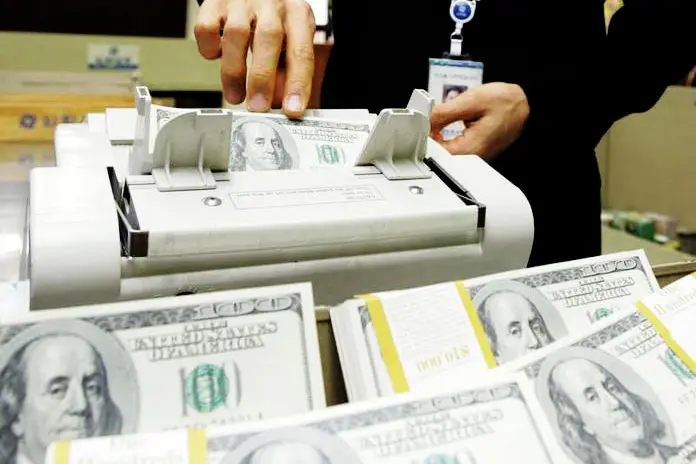PHOTO
Dollar's dominance in global transactions cannot be sustained
By Abdulnasser Alshaali, Special to Gulf News
Does the world need a worldwide single acceptable currency? You see gold was not a currency per se, but gold was used as basis that other currencies can be pegged to. Or let’s say a reference point instead of having multiple, cross exchange rates between different world currencies. When the US dollar replaced gold, it wasn’t the same.
The main difference here is not physically moving gold or currencies as used to be in the early 1900s, but is rather now how much US dollars should be circulated. To understand this, I will be explaining what happens when a country prints a currency for its own economy versus the US printing currency for the entire world’s economy.
I would also briefly discuss whether or not this is sustainable, or a new currency order is underway given the rise in de-peg rate from the US dollar and increase in central banks’ currency swap deals.
When country X prints currency, it is circulated in its own economy and in others. Of course the currency exposure to international trade will depend on different economic factors such as country X’s exporting sector and its trade with different countries.
Anyways, when currency X is printed, country X will have no issues as long as no country comes demanding payment for the currency they are holding. To explain this further, consider the day-to-day transactions between people. If you trust the person, you would accept post-dated cheques, instalments, etc.
However, and when you do not know or trust the person, you demand stricter conditions. If a country trusts country X, no issues. This all would change if, for instance, country X is on the verge of defaulting on its international debt.
In other words, like a bank run where a default would take place because too many demanded their money back at the same time, country X could have managed to pay the interest, but not the principal. It was mentioned earlier that the US dollar replaced gold.
Therefore, an expansion in global trade and other activities means additional US dollars need to be printed where gold had to be minted previously, restricted by capacities of existing mines and prospects of new ones. With the US dollar, the Fed can keep on printing US dollars as long as no one questions US solvency, and the US debt level keeps going higher and higher.
So what happens then when other currencies start having a bigger role in the world’s economy, and more specifically, trade? As per the IMF, the official reserve currencies include the US dollar, Japanese yen, sterling pound, Swiss franc, and the euro.
All of those are among the most traded currencies worldwide. The other currencies in the 10 most traded currencies are the Australian and Canadian dollars, Chinese yuan, Swedish crown and Mexican peso. The US dollar of course dominates more than 80 per cent of all international transactions... though for how long?
Currency swap deals became famous during the 2008 financial crisis, which highlighted the need to have a much faster and more convenient way of providing central banks with currencies whenever needed. However, according to the European Central Bank, since December 2015, it was only the Fed providing the ECB with dollars.
Although the ECB has maintained swap deals to obtain currencies that are on the IMF’s official reserve list, it has also established two deals with two of the other top 10 traded currencies: the Canadian dollar and Chinese yuan. Other countries have also signed currency swap deals. Egypt, as the most recent example, signed a currency swap deal with China when it floated its pound.
The last thought that I want to leave you with: what would happen to the US dollar’s role in international trade if more countries float their currencies and sign swap deals with central banks other than the Fed?
Abdulnasser Alshaali a commercial consultant and a commentator on economic affairs. You can follow him on Twitter at @aj_alshaali.
© Gulf News 2016












